Writers who want to set their stories in verse may be interested in the narrative poem. One of the oldest literary art forms in the history of written language, narrative poetry puts plot to poesy, combining the art of storytelling with the techniques of poetry writing. So, what is a narrative poem?
To answer that question, we’ll explore the characteristics of narrative poetry and the types of narrative poetry, with narrative poem examples from both ancient and contemporary literature.
We’ll also look at how to write a narrative poem, and the strategies poets can use to balance the demands of both poetry form and narrative storytelling. But first, let’s take a closer look at what is a narrative poem.
What is a Narrative Poem?: Contents
Narrative Poem Definition: What is a Narrative Poem?
The narrative poem is a form of poetry that is used to tell a story. The poet combines elements of storytelling—like plot, setting, and characters—with elements of poetry, such as form, meter, rhyme, and poetic devices.
Narrative poem definition: a form of literature that combines the elements of poetry with the elements of storytelling.
The narrative poem is the oldest form of poetry, and one of the oldest forms of literature. Epics like The Iliad and the Odyssey, The Epic of Gilgamesh, and The Mahabharata are ancient and long narrative poem examples. Long before the written word and the invention of mass publishing, storytellers told their stories in verse, and have done so since (at least) 2,100 B.C.
There are several reasons for this, including the challenge of writing in verse and the entertainment value of listening to stories that use meter and rhyme. But the main reason is that those elements served as guideposts for the storyteller. By following the patterns of rhyme and syllabic stress, the storyteller could keep up with which line comes next, so these devices served both mnemonic and entertainment purposes.
Today, the narrative poem has evolved to accommodate the storytelling needs of poets, without (necessarily) the constraints of meter and rhyme scheme. We’ll take a look at some contemporary narrative poems later, charting the evolution of this form against its ancient backgrounds.
Narrative Poetry vs. Lyric Poetry
What are the differences between narrative poetry vs. lyric poetry? Readers sometimes conflate the two terms, but they are markedly different in intent.
The difference between narrative poetry vs. lyric poetry is the poem’s sense of time.
The difference between narrative poetry vs lyric poetry is the poem’s sense of time. In a narrative poem, the measurable flow of time is central to the poem itself. We need time to chart the poem’s story: its order of events, the actions and reactions of the characters, the A causes B causes C, etc. You’ll see this in action in the narrative poem examples we’ve shared.
Article continues below…
Poetry Writing Courses We Think You'll Love
We've hand-picked these courses to help you flourish as a writer.
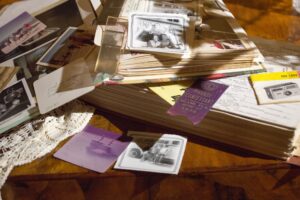
Writing Poetic Memoir: Flash or Prose Poems
Begin crafting a memoir in 8 mini chapters of poetry, prose poetry, or flash. Shape vivid, lyrical narratives that shine...
Find Out More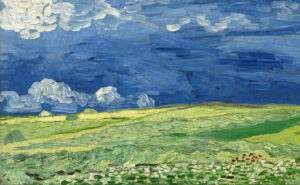
Crafting Poems in Form: Rhyme, Meter, Fixed Forms, and More
Working within the guidelines of a fixed poetic structure can make your poetry more creative, not less. Find freedom in...
Find Out MoreOr click below to view all courses.
See CoursesArticle continues…
In a lyric poem, the poem’s events are suspended in time. While the poem may dwell on time or discuss moments in the past, the poem’s intent is to lift events, emotions, and images from the time they happened, imposing them as something eternal and immutable (though surely interpretable) on the page.
Consider Louise Glück’s lyric poem “Early December in Croton-on-Hudson”:
Whittled down by ice.
I hear the bone dice
Of blown gravel clicking. Bone-
pale, the recent snow
Fastens like fur to the river.
Standstill. We were leaving to deliver
Christmas presents when the tire blew
Last year. Above the dead valves pines pared
Down by a storm stood, limbs bared . . .
I want you.
While the poem is unmistakably about a moment in time, it isn’t about a sequence of events; rather, the speaker crystalizes those events in a language of desire.
Lastly, it’s important to acknowledge that binaries, such as narrative poetry vs lyric poetry, are not absolute. Many poems can fall somewhere in a continuum between the two forms. While thinking about lyric and narrative poems can help guide the work you’re writing, these terms merely categorize poetry in one of countless ways.
Learn more about lyric poetry here:
Narrative Poetry Vs Prose Poetry
Contemporary narrative poems may get confused with the prose poem. Both forms borrow from prose writing strategies, but a prose poem is rarely, if ever, a narrative poem.
At its simplest, prose poetry is a form of poetry that eschews the use of line breaks. Rather than organizing the poem through lines, stanzas, meter, and rhyme, the prose poem lets thoughts flow from margin to margin.
Prose poems rarely exceed 4 pages in length, and are typically only 1 page, maximum, so they’re basically too short to be narrative poems. Moreover, prose poems are largely snapshots of the poet’s mind, making them more lyrical than narrative.
To learn more about prose poetry, check out our article What is a Prose Poem?
5 Types of Narrative Poetry
Across several millennia of literature, a few different types of narrative poetry have emerged. While each type varies in style, form, and intent, they all share the same goal of telling great stories through the power of verse.
These 5 types of narrative poetry include:
1. Types of Narrative Poetry: The Epic
The epic poem is a long narrative poem that usually recounts stories of heroism. The protagonists of epic poems are often kings, knights, heroes, or else extraordinary people who change the fate of history.
In ancient times, epic poetry primarily dealt with the gods, with war, or with other events which define a people’s nationality. The Mahabharata, for example, tells a story of two groups of cousins fighting against each other to determine the successors of the Hastinapura throne, in Ancient India. Interwoven through this story are tales of morality, national identity, and the gods, culminating in a sprawling epic which, to this day, influences certain aspects of Indian culture.
More recently, the story of Beowulf doesn’t contribute quite so much to England’s nationalism, but it does offer a window into the language, culture, and ideologies of the Middle Ages.
There are few epic poems in today’s literary landscape, partially because the epic poem fulfilled cultural needs of the past that aren’t germane to contemporary society. Examples of epic poetry include The Mahabharata, Beowulf, The Aeneid and the Odyssey, The Epic of Gilgamesh, and The Shahnameh, among many others.
2. Types of Narrative Poetry: The Ballad
Among narrative poems, the ballad is more modern than most forms, though it’s evolved quite a bit over several centuries. Originating in Europe, likely England, the late Middle Ages, ballads were narrative poems set to music, intended to accompany dances and entertain large audiences. Similar to epics, the narratives in ballads were about extraordinary individuals, such as Robin Hood.
Much later, in the 19th century, the ballad form was adopted by Romantic and Victorian-era poets who admired the folksy yet literary attributes of ballad poetry. Because this evolution spans centuries, the meter and topicality of ballad poetry varies, but most ballads were intended to tell stories and entertain.
Ballads aren’t nearly as popular in the 21st century, but some great 19th century ballads include The Rime of the Ancient Mariner by Samuel Taylor Coleridge and The Ballad of Reading Gaol by Oscar Wilde.
3. Types of Narrative Poetry: The Idyll
The word “idyllic” describes something reminiscent of rural and pastoral life. Idyll poems, thus, are narrative poems which celebrate, describe, and explore rustic life.
Idyllic poetry is typically short, but it still builds a narrative, and often a group of idylls will be strung together to form a larger story. For example, 12 idylls together form Tennyson’s Idylls of the King, which retells the story of King Arthur, his love for Guinevere, and the story of his kingdom.
Perhaps a better example, stylistically, is Friedrich Nietzsche’s Idylls from Messina. These 8 poems describe different facets of the idyllic life as Nietzsche observed while writing in Sicily. Although the writing is a bit more lyrical than most idylls (and although Nietzsche was not a poet by trade), the simplistic, storytelling style of idyllic poetry can be observed in the speaker’s word choice and simple rhyme schemes.
4. Types of Narrative Poetry: The Lay
The lay is a somewhat long narrative poem that, like other forms of poetry, evolved through several centuries. The earliest recorded lay poems were written by Marie de France, a French woman, and lays were often stories of romance, chivalry, and emotional experiences.
Lay poetry was typically written in octosyllabic verse, meaning each line had 8 syllables. Before Marie de France’s time, some Celtic poetry was lay and involved aspects of Celtic theology, telling stories of fairies and the supernatural. Lay poems always rhyme, and rarely exceed 1,000 lines.
Also spelled “lai,” lay poetry is mostly confined to the Middle Ages, as few poets dabbled in the form outside of Middle English. The Canterbury Tales includes instances of lay, namely The Franklin’s Tale, which explores themes of truth and magnanimity.
5. Types of Narrative Poetry: The Novel in Verse
Among contemporary narrative poems, the novel in verse rules. A verse novel is exactly what it sounds like: a novel-length story told through lines of poetry, not prose. (If you’re not sure about the distinction between the two, take a look at our article on Prose Vs Poetry.)
Because a novel in verse is largely experimental, there are no solid rules for how to write one. However, many verse novels tend to have first person narrators, short chapters, and non-linear storytelling. Additionally, verse novels emphasize internal dialogue and emotions, sometimes employing stream-of-consciousness techniques.
The novel in verse is rising in prominence among several age groups. (We even offer a course on Crafting the Poetry Novel for Young Adults!)
Some examples of these long narrative poems include: Autobiography of Red by Anne Carson, The Poet X by Elizabeth Acevedo, Omeros by David Walcott, Inside Out & Back Again by Thanhha Lai, and Dreaming of You by Melissa Lozada-Oliva.
Characteristics of Narrative Poetry
What do these different types of narrative poetry have in common? The characteristics of narrative poetry include:
- An emphasis on storytelling: narrative poems convey plot, setting, characters, and other key elements of stories.
- Experimental language: the unexpected, experimental word choice in narrative poems should surprise, delight, awe, transfix, move, inspire, and/or captivate the reader.
- Non-linear story structure: narrative poems rarely follow a single narrative thread or linear structure. These poems might jump forward or backwards in time, start in the middle, or trace completely disparate events before stitching them into one unified story.
- Contemporaneous forms: you may have noticed that no two types of narrative poetry are written in the same way. Each has its own form, and that form is dependent on the poem’s story, the year it was written, and the region it was written in. Contemporary narrative poems tend to be free verse.
- Mythological elements: Most of the narrative poetry written in antiquity dwelled on mythology. Even some contemporary examples, like Anne Carson’s Autobiography of Red, is a retelling of Greek myth, though modern day verse novels aren’t uniformly interested in myth.
- Internal characterization: Many narrative poems focus on the internal. The poetic language of the form allows writers to capture thoughts, feelings, and internal challenges that prose might not properly capture. Modern novels in verse are usually told from the 1st person, or from a very limited 3rd person point of view.
You can see these characteristics in action in the below narrative poem examples.
Narrative Poem Examples
Here are 5 narrative poem examples from both classic and contemporary literature. Each poem is a long read, so we’ve included an excerpt from the poem and a link to read the whole piece.
Each of these poems can be read without needing footnotes or historical knowledge. The same cannot be said of older poems, like Beowulf or The Mahabharata.
Take note of how each poem sets the scene, plays with the progression of time, and experiments with language to further the story.
“Litany in Which Certain Things are Crossed Out” by Richard Siken
Siken’s poem is haunting. The interplay of narratives offers a window into the speaker’s beliefs about love, and the intense guilt that tinges the speaker’s desires. Moreover, the construction of the speaker through narratives of castles and dragons builds a stunning metaphor for the speaker’s own identity.
The Glass Essay by Anne Carson
The Glass Essay is a bit hard to define. It is technically a narrative poem, though Carson herself has called it a lyric essay, and like much of Carson’s work, this piece is a bit impossible to define by genre alone. Nonetheless, Carson’s poem has a certain “totality of life” to it, discussing love, family, poetry, and the essence of the soul, all while detailing the poet’s visit to her mother.
“Casey at the Bat” by Ernest Lawrence Thayer
“Casey at the Bat” isn’t quite so metaphysical as these other poems, but it’s certainly musical and entertaining. The poem’s rhyme scheme and sing-songiness keep the reader moving, and the poem’s events do a great job at building suspense. Each stanza works as its own independent unit, and the poem evokes images of a great sports crowd in 1880’s America.
Aurora Leigh by Elizabeth Barrett Browning
Aurora Leigh is a 9-part novel in verse about its titular protagonist, Aurora, and her life from childhood to her present. Its publication in 1856 catapulted Elizabeth Barrett Browning into the spotlight. This long narrative poem’s lengthy text deals with questions of class, gender, and social equality, issues that were captivating Europe and the United States at that time.
“Trevor” by Ocean Vuong
“Trevor” is a powerful coming-of-age poem about queer desire and masculinity. The poem is representative of contemporary writing, in that it experiments heavily with form and language. At the core of the poem, a question: how can one be bravely tender, when tenderness is viewed as cowardice?
How to Write a Narrative Poem: 7 Tips
The following 7 tips will help you learn how to write a narrative poem. Be aware that this poetry form is tricky to write, so you’ll want to be sure you know how to write a poem in general, and you’ll also want to know the basic elements of storytelling.
Above all, have fun, and embrace the challenge. Here are 7 tips for success!
1. How to Write a Narrative Poem: Read narrative poetry like a poet
An important skill for any poet to master is reading poetry like a poet. Paying careful attention to how narrative poems are constructed will help you construct one of your own. Spend some time immersing yourself in narrative poem examples, both ancient and contemporary, and ask yourself questions about how the poet approached the language and form of the poem.
2. How to Write a Narrative Poem: Consider poetry forms
As you read like a poet, you’ll notice that contemporary narrative poems aren’t as formulaic as poems in antiquity, and you might also notice that contemporary poems are more experimental in form. That’s not to say your poem needs to be experimental and abandon conventional forms, but spend some time thinking about how you want to write your poem. Do you want to use meter or rhyme schemes? Are you inspired by the forms of specific poems?
3. How to Write a Narrative Poem: Outline, but only in brief
Because narrative poems are long, you’ll want to spend time outlining what happens in the piece. However, don’t spend too much time on this: the best poetry is written through the spontaneity of language, and you can’t plan for exactly what you might write. Nonetheless, know how to write a story outline, figure out the poem’s main conflicts, and consider using a narrative structure like Freytag’s Pyramid.
4. How to Write a Narrative Poem: Get to the action
When you start writing your poem, don’t spend too much time worrying about set-up and exposition. Get straight to the action, and let that action drive the poem’s characterization, setting, and plot. Poetry has a natural way of fleshing out a character’s internal reality, so lean into the language of poetry, and let it do the work of setting up the story.
5. How to Write a Narrative Poem: Write about minutiae
The best narrative poems use specific, detailed, concrete imagery. This imagery helps situate the reader in the story, and it also builds surprising metaphors and symbols that captivate the reader. Focusing on minute details in your poem will help move the reader forward, adding depth and complexity to your poem while still advancing its plot and emotions.
6. How to Write a Narrative Poem: Use repetition
Because narrative poems are rich with language and description, important details can get lost in the reader’s mind. Repetition helps remedy this problem. In addition to repeating important information, repetition devices will also help add musicality and rhythm to your poem, highlighting important ideas and images for the reader to keep in mind.
7. How to Write a Narrative Poem: Give yourself time
As you learn how to write a narrative poem, you’ll notice one thing: it’s hard. Whether you’re writing a novel in verse or a short story, it takes a lot of mastery over form and word choice to really nail narrative poetry. Your poem will take time to finish, and even more time to revise and revise again. This is all part of the process, so lean into the beauty and mystery of poetry, and let yourself be swept by language.
Write Moving Narrative Poems at Writers.com
What is a narrative poem? It may be your next challenge as a writer. For advice and feedback on the narrative poetry you write, take a look at our upcoming poetry courses.


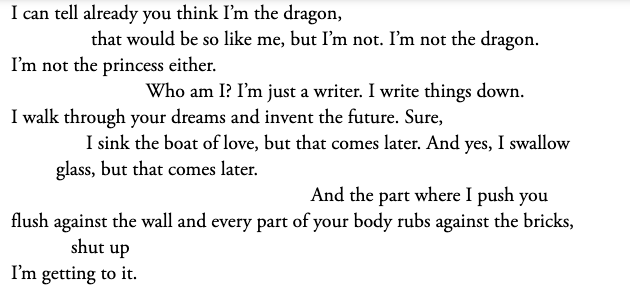
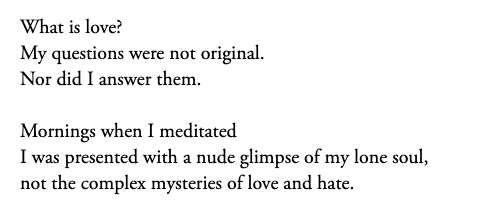

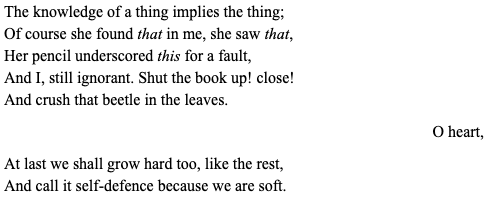

Absolutely Great. Really learned a lot. My grateful thanks. and regards.
Thanks for information.
Good! I’m leading a writing group on narrative poetry. This helps pin down everything I’ve been thinking about it.
[…] It’s National Poetry Month and today’s challenge is a narrative poem. Unsure of what a narrative poem is? Check out this link. […]
[…] Reference: https://writers.com/narrative-poem-definition […]
[…] 1https://writers.com/narrative-poem-definition […]
[…] Maria is eighty-five years old and has more energy than most people half her age. She met us each morning at 8:30 am for breakfast and stayed with us all day doing workshops. Our day ended with her around 9:30 pm after a poetry reading. I was exhausted, and my notebook was filled with pages of new poetry gems. Maria and Kevin taught me about the narrative poetry form. […]